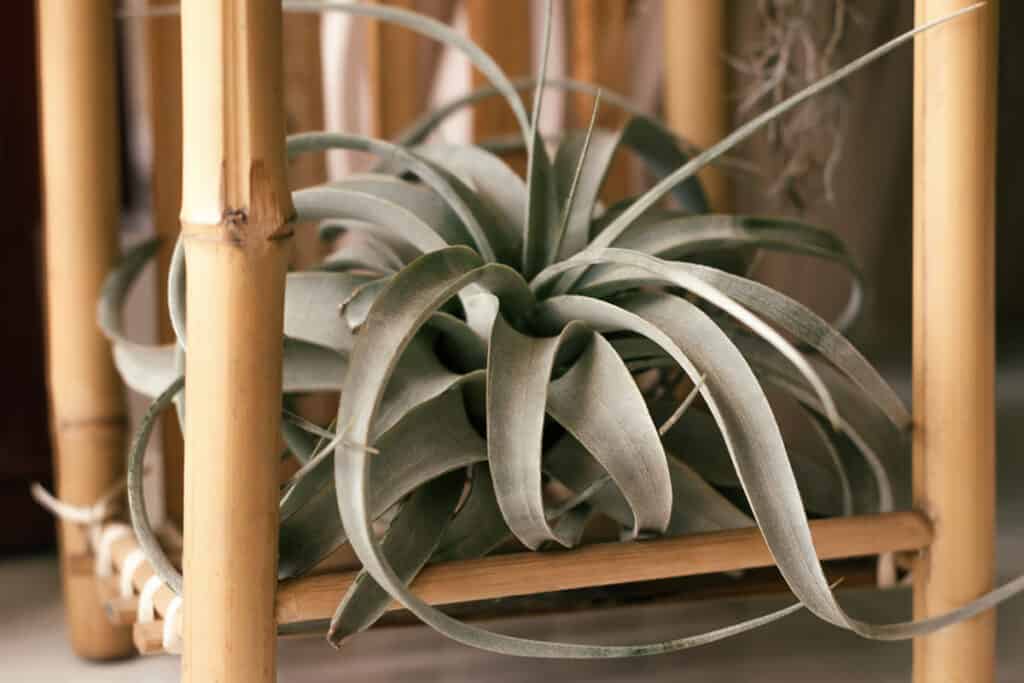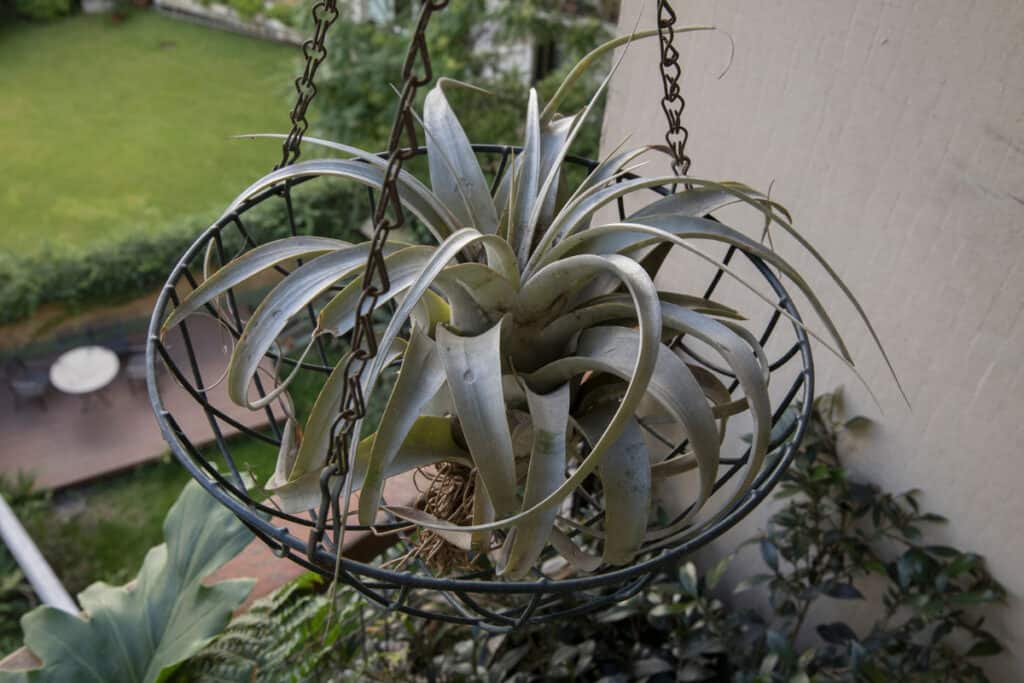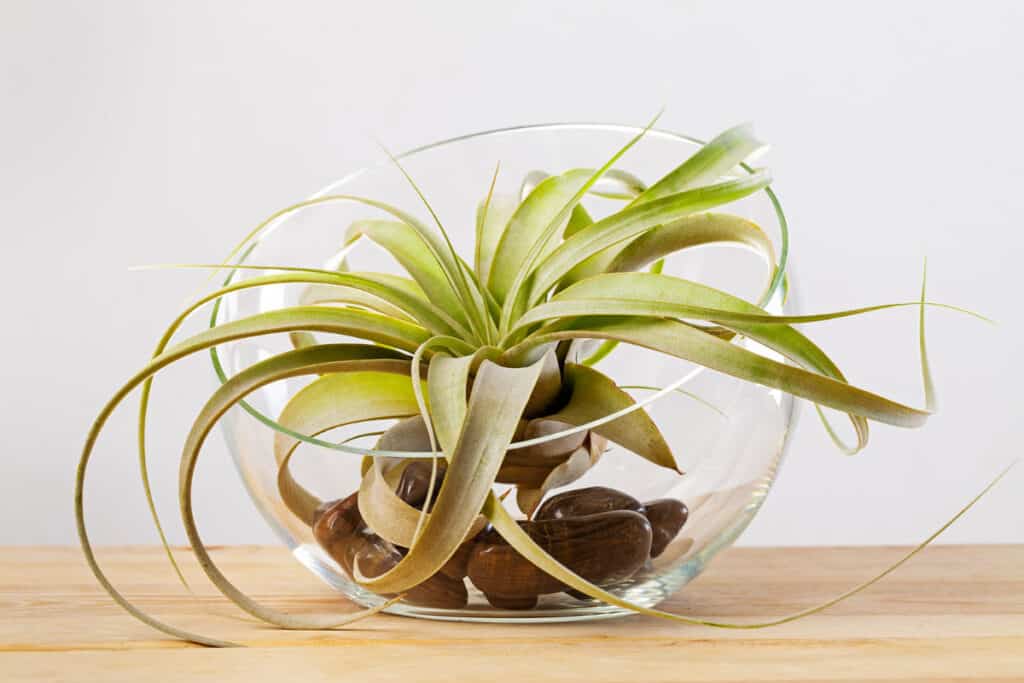Xerographica Air Plants: Characteristics and Care
Forget high-maintenance houseplants – the trendy new must-have for your home is the virtually indestructible Xerographica air plant! These unique, soil-less wonders are taking the interior design world by storm with their sculptural shapes and silver-green hues. Keep reading to learn why the Xerographica is an Instagram-worthy decoration that even brown thumbs can’t kill.

Contents
About Xerographica Air Plants
Also known as the “teddy bear cactus” or “old man’s beard,” the Xerographica is part of the Tillandsia genus, a family of epiphytes native to Central America. Don’t let the “air plant” name fool you – these petite perennials are far from plain! The Xerographica forms a striking rosette up to 14 inches wide when mature, with thick, curved gray leaves tipped in delicate white fuzz.
Its mesmerizing geometric shape and texture make it a stylish focal point for terrariums, hanging planters, or even mounted on driftwood or rocks. Best of all, the Xerographica’s miniature blooms can last for months, ensuring long-lasting pops of color. It’s no wonder plant lovers everywhere are going wild for the head-turning Xerographica!
Care Couldn’t Be Easier
What really sets the Xerographica apart is its amazingly low-maintenance nature. Since they derive nutrients from the air through specialized scales rather than soil, these plants have virtually no needs beyond bright, indirect light and occasional misting. Here’s a quick guide to keeping your trendy Xerographica thriving:
- Light: Bright, filtered sunlight is ideal, similar to that of an east or west-facing window. Avoid direct rays which can scorch the leaves.
- Water: Once a week, submerge the entire plant in a bowl of room temperature water for 15 minutes, then gently shake off excess and return to its display. Allowing the plant to fully dry between waterings prevents rot.
- Temperature: Xerographica do best in average household temps between 60-90°F. Avoid cold drafts or blasts of heat.
- Fertilizer: For optimal growth, use an air plant fertilizer every 4-6 weeks, diluted to 1/4 strength.
- Humidity: These plants adore humid environments of 50-90% humidity if possible. Simple tricks like setting on a tray of pebbles or grouping plants together helps boost moisture levels.
With such minor demands yet such showstopping looks, it’s no surprise Xerographica air plants are causing a decor craze! Trendy design buffs are incorporating these sculptural stunners into every room for a dose of effortless, naturalistic beauty.
Endless Decorating Possibilities

Thanks to their soil-less nature, Xerographica can be creatively displayed virtually anywhere indoors. Suspend a single plant in a glass globe for an eye-catching hanging accent, or cluster several mounted on bark or driftwood for an earthy vignette. Line up a few in sleek ceramic planters for a minimalist centerpiece, or tuck them into clear apothecary jars for easy, fuss-free terrariums.
The styling options are limited only by your imagination! One thing’s for certain – with their modern yet organic beauty, Xerographica air plants are bringing the outdoors in and upping the trendy houseplant game for décor enthusiasts everywhere. What was once a niche botanical specimen has officially become this year’s must-have home accessory. So hop aboard the Xerographica craze and breathe some new life into your interior spaces!
Related Post:
How To Grow Air Plants From Seed (Step-by-Step Guide)
Frequently Asked Questions (FAQs)

How long does it take Xerographica to bloom?
Xerographica air plants typically bloom within 1-2 years but can take up to 3-4 years to reach full maturity. During the blooming process, the plant will form a tall center stalk up to 8 inches long with clusters of white or pink flowers along the length. Some plants may even produce multiple flower stalks during their lifetime. After blooming, the plant will produce offsets, which can be separated and replanted to form new plants. The blooming process is slow, but with proper care you can enjoy the beautiful flowers for years.
How long does Tillandsia Xerographica live?
With the right conditions, Tillandsia Xerographica can live for many years – up to 15-20 years is possible! To ensure a long lifespan, provide bright, indirect light daily, regular misting to maintain humidity, and fertilize every 4-6 weeks with a balanced air plant fertilizer diluted to 1/4 strength. Avoid overwatering or underwatering, as these can lead to rot or other diseases. With attentive care and monitoring, your trendy Xerographica can provide Instagram-worthy decor for decades.
